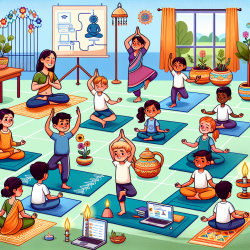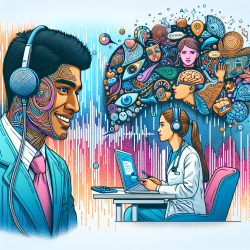Introduction
In the realm of child development and health, physical activity plays a pivotal role in preventing non-communicable diseases (NCDs). The recent study titled "Association between yoga and related contextual factors with moderate-to-vigorous physical activity among children and youth aged 5 to 17 years across five Indian states" provides valuable insights into how yoga, a culturally-rooted practice, can enhance physical activity levels among children and youth in India. This blog explores the study's findings and their implications for practitioners aiming to improve outcomes for children through school-based programs.
Key Findings
The study, conducted during the COVID-19 lockdown in 2021, utilized online surveys to assess the relationship between yoga practice and moderate-to-vigorous physical activity (MVPA) among children aged 5 to 17 years. Here are some of the critical findings:
- Yoga practice was significantly associated with higher MVPA levels, with a beta coefficient of 0.634 (p < 0.000).
- The association was stronger among males and children living in urban areas.
- Children aged 5 to 10 and 14 to 17 showed a stronger correlation between yoga and MVPA than those aged 11 to 13.
- Having active friends and school participation in sports competitions were also positively associated with higher MVPA levels.
Implications for Practitioners
For practitioners working with schools to enhance physical activity, these findings underscore the importance of integrating yoga into physical education curricula. Here are some actionable insights:
- Incorporate Yoga in School Programs: Given its cultural relevance and proven benefits, yoga can be a powerful tool in school-based physical activity programs. Schools should consider integrating yoga sessions into their regular physical education classes.
- Focus on Early and Late Adolescence: Tailor yoga programs to engage children in the 5-10 and 14-17 age groups more effectively, as these cohorts showed a stronger association with MVPA.
- Promote Social Support: Encourage peer-led yoga sessions or group activities to leverage the positive impact of having active friends on physical activity levels.
- Address Gender Disparities: Design gender-sensitive yoga programs that cater to the preferences and interests of both male and female students.
Encouraging Further Research
While this study provides a robust foundation, further research is needed to explore the long-term effects of yoga on physical activity and health outcomes in diverse populations. Practitioners are encouraged to collaborate with researchers to conduct longitudinal studies and randomized controlled trials that can substantiate these findings and explore new dimensions of yoga's impact on child health.
To read the original research paper, please follow this link: Association between yoga and related contextual factors with moderate-to-vigorous physical activity among children and youth aged 5 to 17 years across five Indian states.










